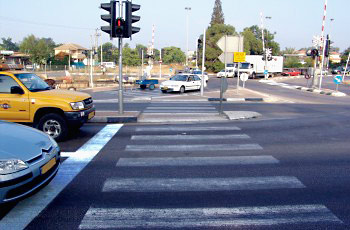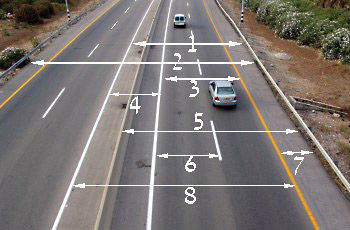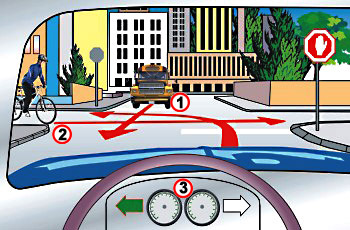Question:1
Is it permitted to park a vehicle on the left side of a two-way street?
Category : Rules and Regulations
Question:2
Are you permitted to pass another vehicle on its right side?
Category : Rules and Regulations
Question:3
How should one refer to a pedestrian crossing that is divided by a traffic island?

Category : Rules and Regulations
Question:4
In case of a driver incurring 36 demerit points or more:
Category : Rules and Regulations
Question:5
Is a motorcyclist permitted to cross a sidewalk?
Category : Rules and Regulations
Question:6
How should a driver conduct himself after hitting a parked vehicle in the absence of its owners?
Category : Rules and Regulations
Question:7
What type of insurance covers the damage that is caused to other vehicles?
Category : Rules and Regulations
Question:8
Is it permitted to re- fuel a vehicle while its motor is running?
Category : Rules and Regulations
Question:9
When are you forbidden to overtake another vehicle?
Category : Rules and Regulations
Question:10
It is prohibited to make a U-turn:
Category : Rules and Regulations
Question:11
How should a driver conduct himself when another vehicle suddenly emerges in his driving lane from the opposite direction, heading towards him?
Category : Rules and Regulations
Question:12
Which changes in health condition must be reported to the Licensing Authority?
Category : Rules and Regulations
Question:13
Which vehicles are required to be equipped with a reflective traffic vest?
Category : Rules and Regulations
Question:14
The following penalties may be imposed by a court of law on a driver convicted of committing a traffic offence:
Category : Rules and Regulations
Question:15
The following illustration shows a wide road. Which number in it marks a road?

Category : Rules and Regulations
Question:16
Which of the following vehicles may enter the intersection first?

Category : Rules and Regulations
Question:17
On a narrow two-way road with an unbroken separation line dividing the two lanes, how would you conduct yourself when a horse drawn wagon drives before you and the opposite traffic lane is open?
Category : Rules and Regulations
Question:18
What is the legal definition of “lighting up time”
Category : Rules and Regulations
Question:19
Is it permitted to make changes in the vehicle’s design or type?
Category : Rules and Regulations
Question:20
It prohibited to overtake before a pedestrian crossing:
Category : Rules and Regulations
Question:21
While overtaking or passing by another vehicle:
Category : Rules and Regulations
Question:22
When are you required to turn on the direction indicators and signal?
Category : Rules and Regulations
Question:23
Is a driver permitted to drive over the speed limit while overtaking?
Category : Rules and Regulations
Question:24
What is a “U-turn”?
Category : Rules and Regulations
Question:25
Is it permitted to drive under the influence of sedatives?
Category : Rules and Regulations
Question:26
Is a policeman permitted to demand of a vehicle driver to perform a “Breathalyzer test”?
Category : Rules and Regulations
Question:27
When is it lawfully required to perform a vehicle license test?
Category : Rules and Regulations
Question:28
How should a driver of a vehicle that was involved in a road accident with casualties conduct himself?
Category : Rules and Regulations
Question:29
What should you do when driving on a narrow roadway and you are suddenly approached by a vehicle from the opposite direction?
Category : Rules and Regulations
Question:30
Who is held responsible for safety in a vehicle that drives in reverse?
Category : Rules and Regulations

